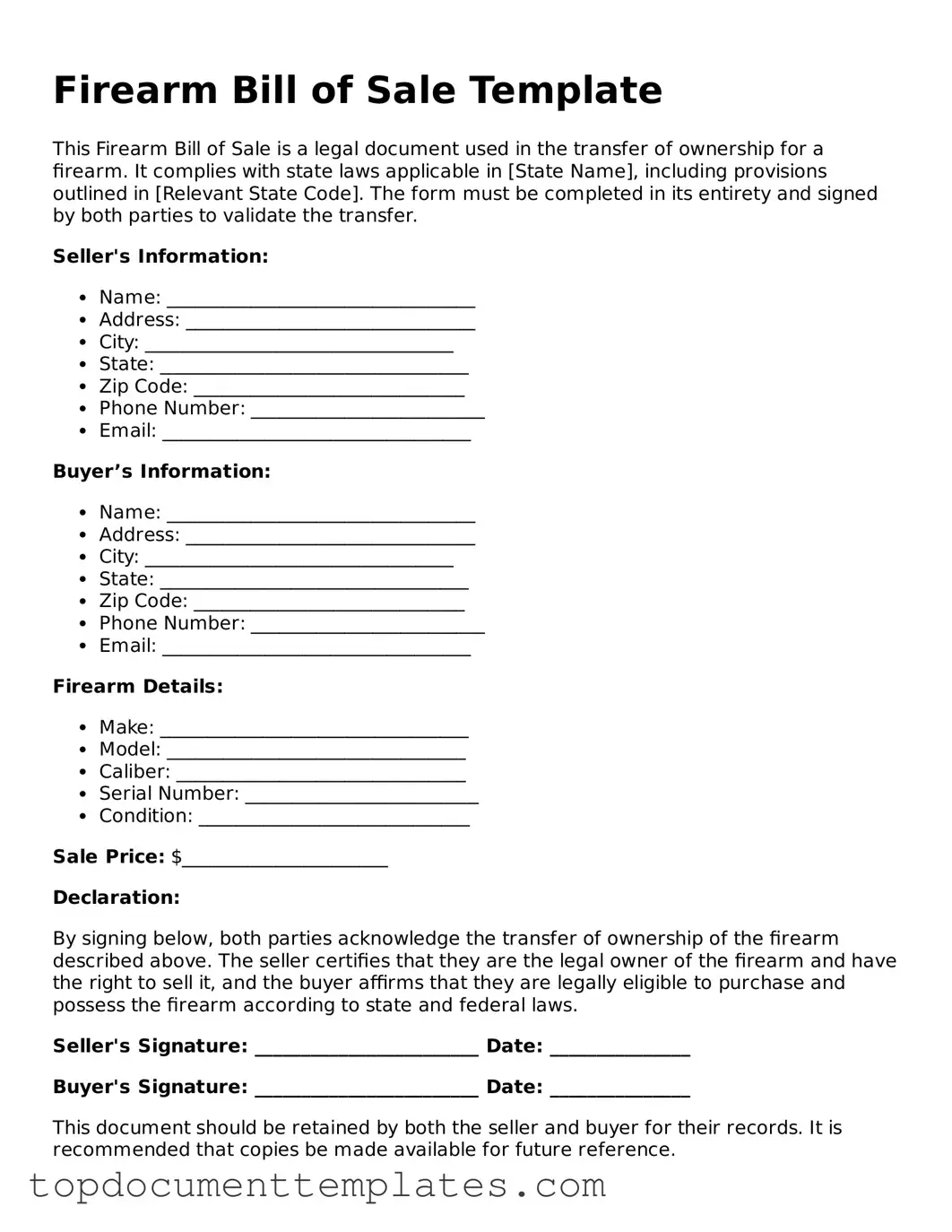Official Firearm Bill of Sale Template
The Firearm Bill of Sale form is a legal document that records the transfer of ownership of a firearm from one individual to another. This form serves as proof of the transaction and includes essential details such as the buyer's and seller's information, firearm description, and sale date. To ensure a smooth and compliant transfer, consider filling out the form by clicking the button below.
Open This Form
